In autumn, Cumbria’s indigenous woodlands glory in the transformative power of the season. Lit by an increasingly shallow arc of sun, bracken flares deep red on the fellsides, and autumn and winter migrant birds begin to arrive.
The UK’s single-most visited national park, the Lake District swarms with visitors drinking in its scenic delights, particularly in summer. But in its quieter corners, it is evolving into more than a tourist attraction, as conservationists return the land to its wilder past. In these edgelands, wildlife thrives. This autumn, go beyond the gift shops and popular spots to discover the Lakes’s finest natural spectacles.
Learn more about the Lake District and plan your trip with our autumnal travel guide.
The deer rut
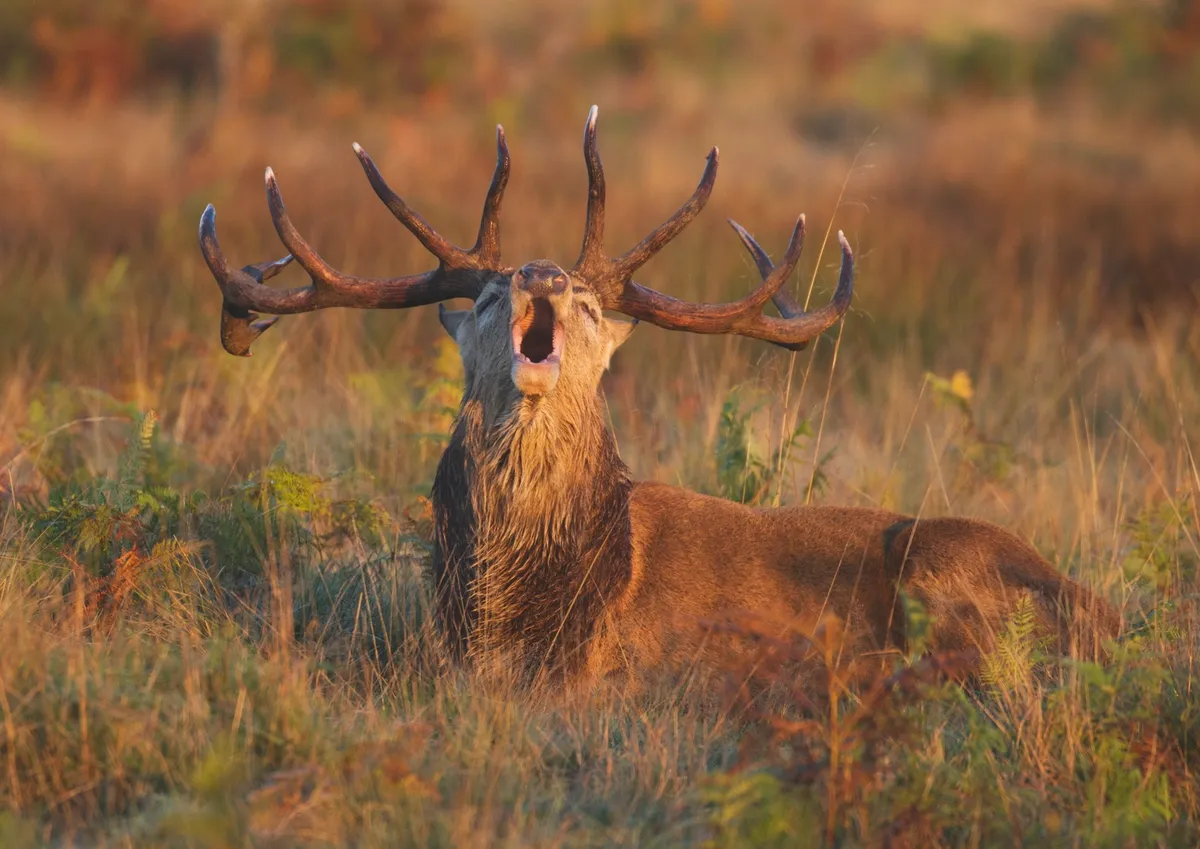
In early October, the first port of call for any wildlife enthusiast must be to join a lake cruise with a difference on the RSPB Red Deer Cruises. Watch brilliant autumn colours reflected in the lake as the steamer crosses Ullswater to Howtown, before a short walk leads to the Martindale reserve, home to one of the oldest native red deer herds in England.
Rutting season delivers one of the Lakes’ wildest shows. Hear the stags bellow, the sound echoing around the fells, and watch as they compete in elaborate displays of power, roaring and fighting to claim dominance over the females. It’s a staggering spectacle.
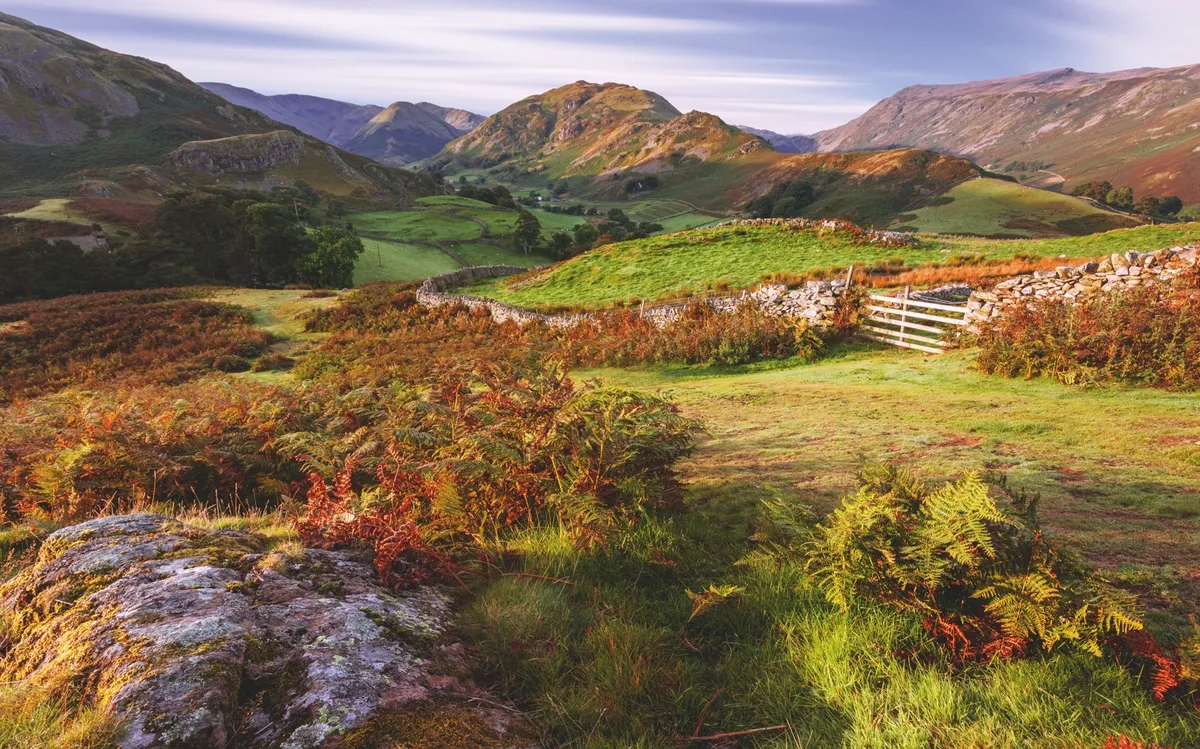
You can also witness the dramatic red deer rut under the valley head of Haweswater, framed by the summits of Harter Fell, Mardale Ill Bell and Branstree. And during September, look out here for the mountain-dwelling ring ouzel, an elusive member of the thrush family, feeding on juniper berries that flourish on the fellsides. Spy ravens, too, high above the steep Riggindale ridge.
Discover more great places to see the autumn deer rut and identify your own with our British deer guide.
The sight of a sleek, agile otter rolling and playing or eating, then disappearing with a final water-lick of the tail is one of the most privileged wildlife moments of all. Otters had all but disappeared from Cumbria in the 1980s, but cleaner waterways have allowed them to make a comeback in the Lake District and they are increasingly present on the river systems. Sighting hotspots include Bassenthwaite lake and under the busy steamer pier by Ambleside.
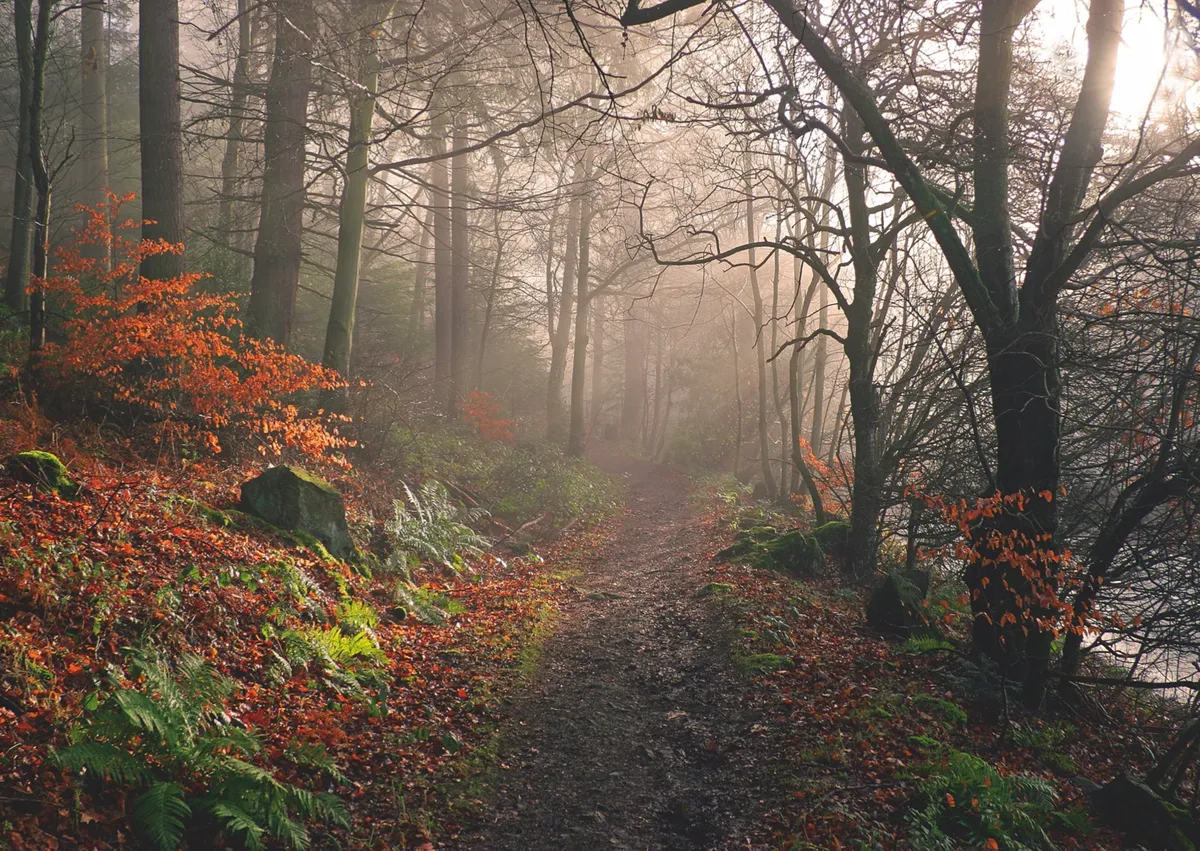
At Dodd Wood, close to Bassenthwaite, the crossbill has become a regular autumn visitor. Its call begins like an electrical charge – a high-pitched ‘bree, bree’ followed by ‘chuck chuck chuck’ ringing down from the highest branches. These chunky finches are flamboyantly attired, the males sporting exotic shades of red, the females green and brown hued. The bill is crossed at the tip, adapted for searching out seeds from pine cones. Often found in noisy family groups or larger flocks, crossbills skim along the treetops in search of pine cones like leaves being pushed along by an October wind.
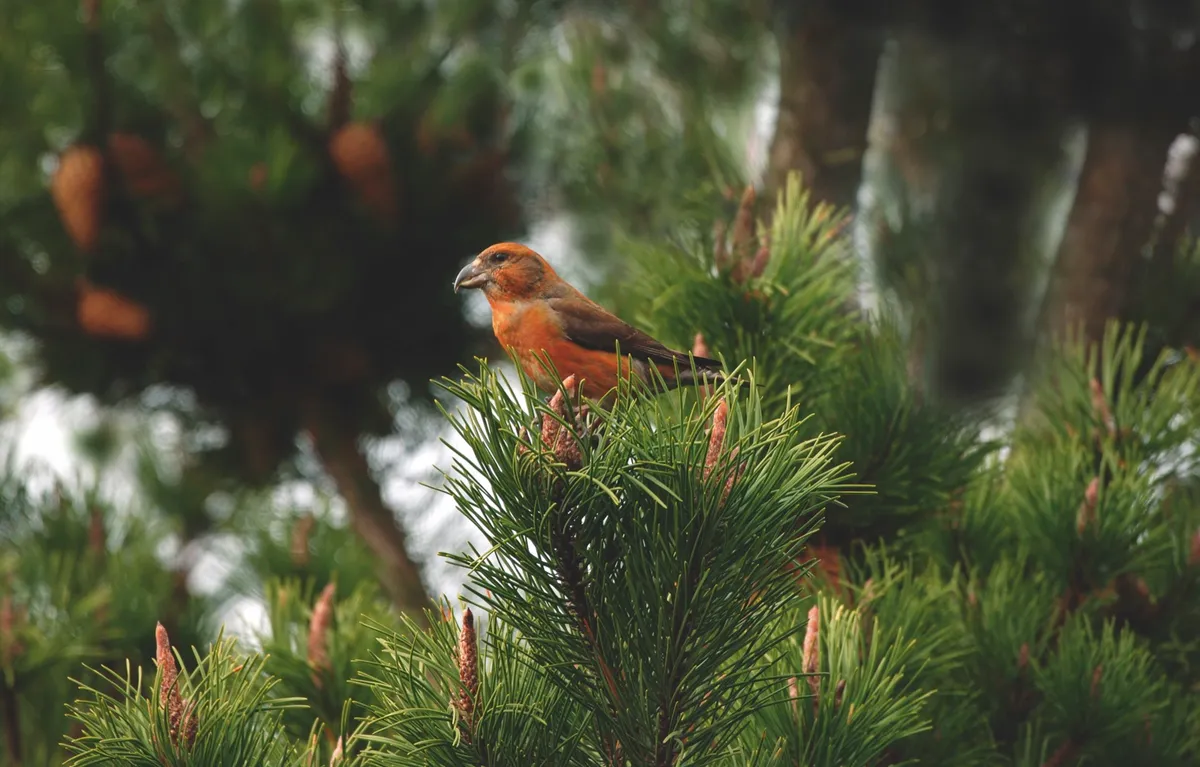
North of Ambleside, the Vale of Rydal opens into wide parkland. Autumn offers a lasting visual feast as the leaves evolve into fiery colours, with a succession of cold, bright days producing the most dramatic changes. Walk in this valley or neighbouring Scandale for a journey through trees and time – many of the park’s mature trees are ‘veteran trees’ of significant age. Some of these leviathans are dying off, so a project to keep the woods healthy for future generations is underway.
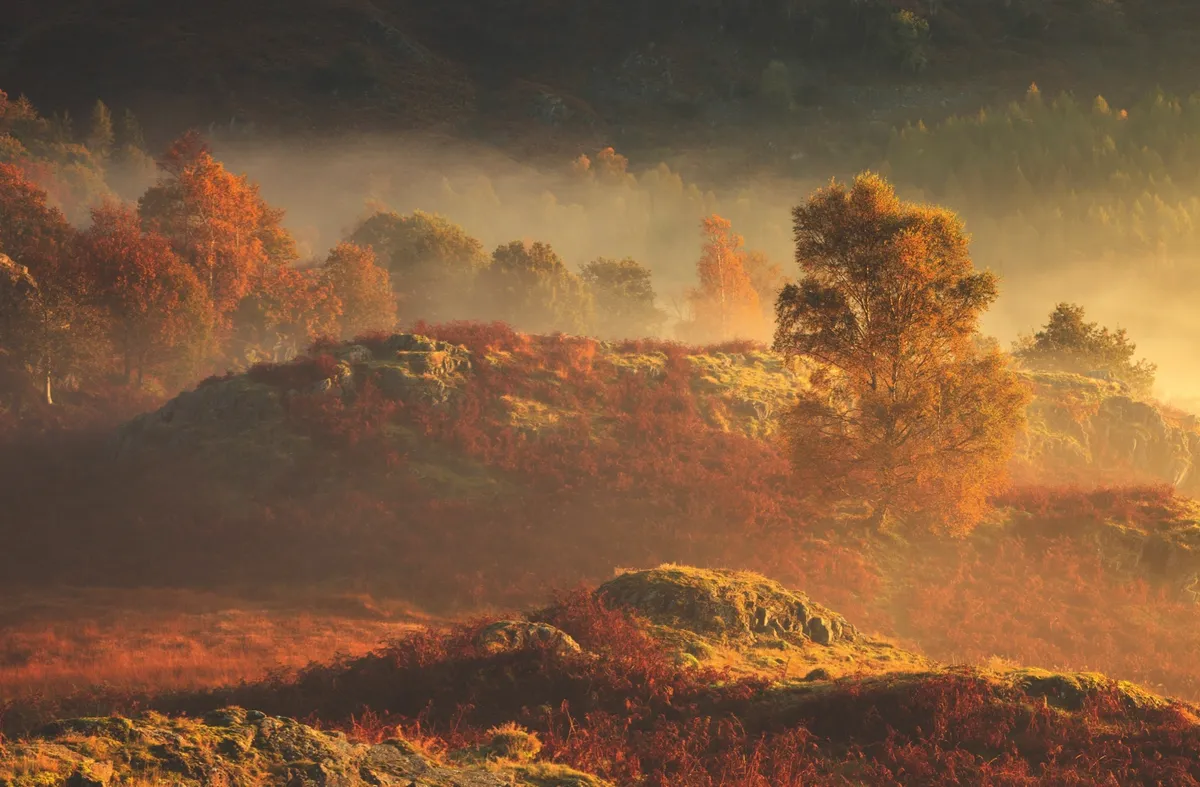
Conservation in the Lakes
When you next gaze up a Cumbrian fellside, look at the bracken spreading almost to the felltops. Bracken is a genetic marker, showing the extent of woodland and scrub-cover in previous ages – and how much has been lost to extensive sheep grazing.
In a key partnership between local farming families and Natural England, sheep have been removed from the fells here, replaced by shaggy-coated grazing Highland cattle. These longhorns feed more selectively than sheep, and their heavy trampling helps the regeneration of native seedlings. They also create open spaces in woodland, which form super-rich wildlife habitats.
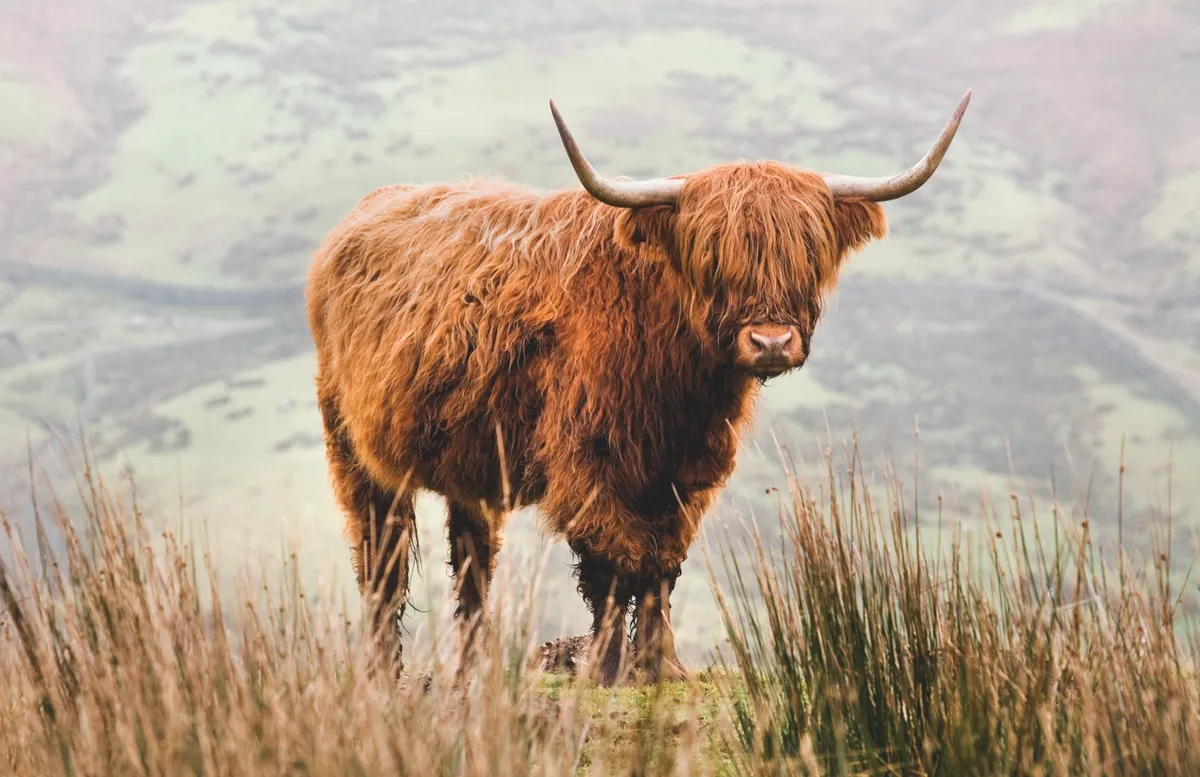
Another conservation measure to replenish the land has seen thousands of indigenous trees planted across the valleys. In a decade, these incipient trees will flicker with colour in autumn, like candle flames lit across the fellsides.
With the sheep removed, some of our most beautiful and rare native wildflowers, such as the bird’s eye primrose and the late-flowering devil’s bit scabious, have emerged again and continue to spread, favouring wet ‘flushes’ – damp ground where water rises from the limestone sub-strata. Native trees are taking root on rocky outcrops and the humble bramble is establishing itself. When I walked up Scandale to see the changes, a pair of ravens mobbed the valley’s resident peregrine falcon. From a great height, the peregrine dropped into the valley bottom at the speed of light.
Best woodlands to visit in the Lake District
Just a mile from Keswick in the Borrowdale valley, footpaths lead through Great Wood, an indigenous Atlantic oakwood of which there are few examples in the UK.
Thanks to a high annual rainfall of 3.5m each year, the woods drip with a fabulous assemblage of mosses, liverworts and lichens. Cushion moss drapes itself over dry-stone walls. Long-tailed tits spread high-pitched gossip among the trees, and treecreepers wind their way up the trunks seeking out insects, their needle-like bills perfectly adapted for the job.
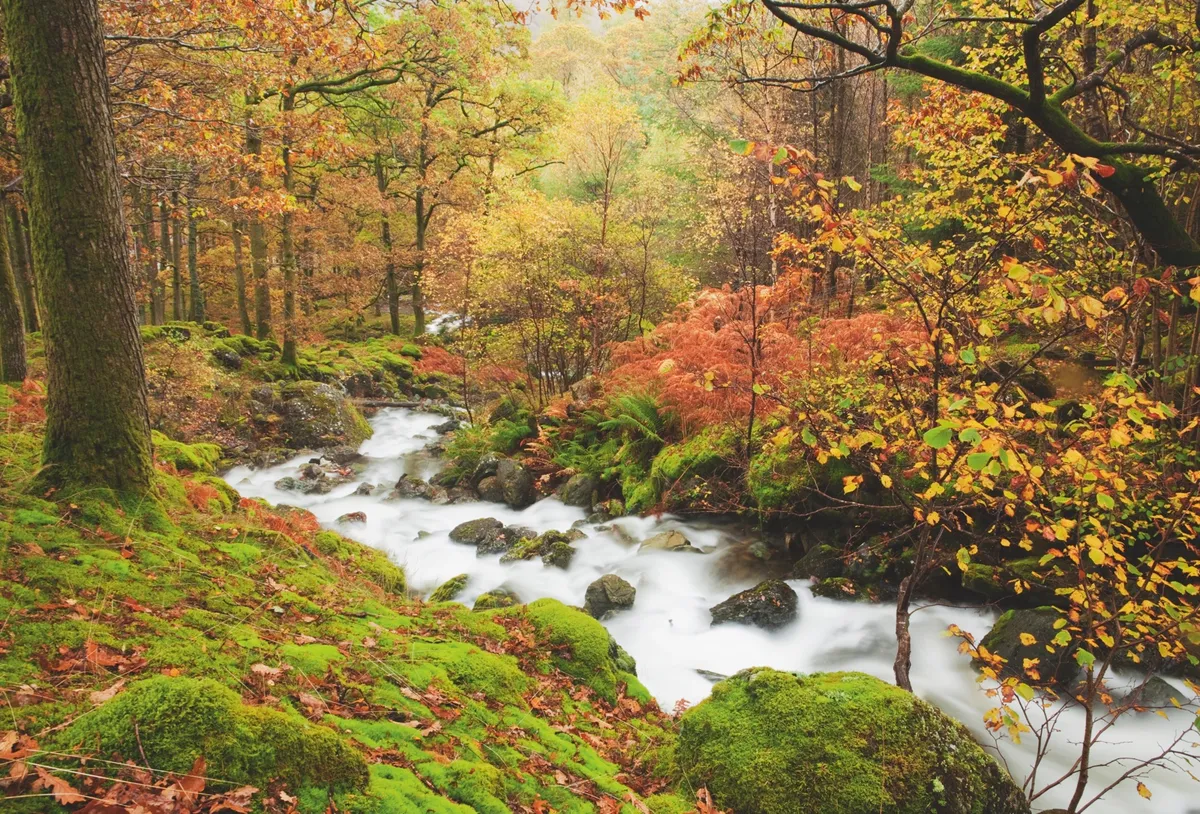
Autumn is a great time to observe these sociable birds, as coal tits, blue- and great tits flock together. Woodcocks migrate to our oak woods in autumn, although they can be hard to see, as they are largely nocturnal and spend the day in dense cover. My only encounter was typical – this straight-beaked, well-camouflaged and stout wader scooted out from leaf-cover right under my feet as I walked a woodland path. I don’t know which of us had the greater surprise.
Best waterfalls to visit in the Lake District
In autumn, the rivers are beginning to fill, and the spectacular waterfalls make a rewarding excursion. You can blow the cobwebs away at Colwith Force near Ambleside, Lodore Falls in Borrowdale or Stanley Ghyll in Eskdale.
Native red squirrels thrive at Aira Force on Ullswater. The Penrith & District Red Squirrel group and the National Trust have provided squirrel-feeding stations among the trees, and the Red Squirrel Ramble is excellent for families, offering a squirrel-spotting journey around the woods and waterfalls.
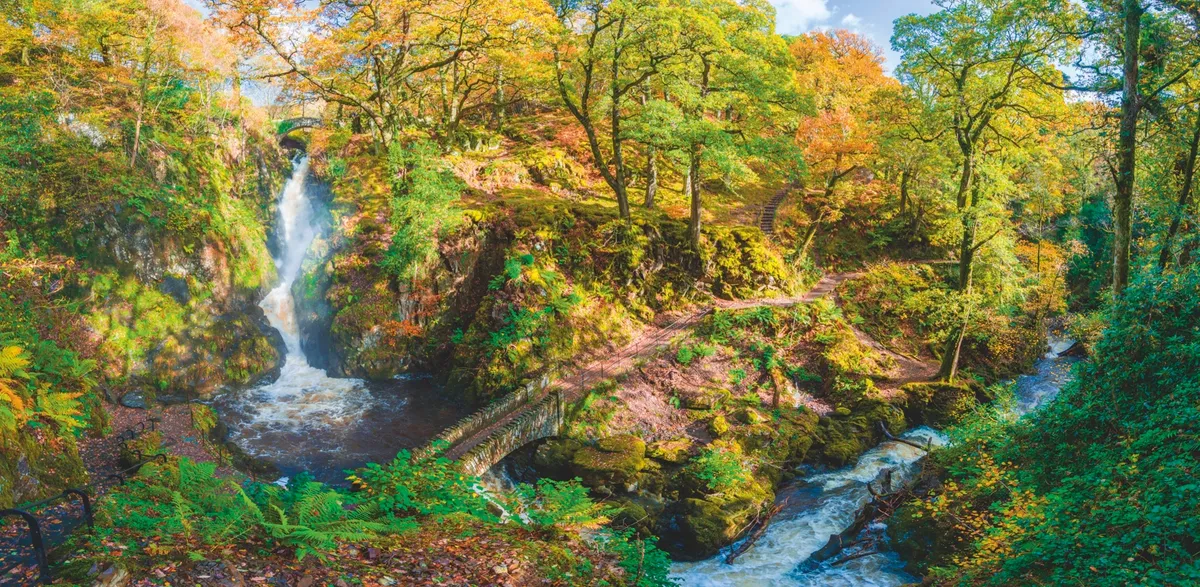
One riverside species that never fails to entertain is the dipper. Like a stout blackbird, but smaller and with a distinctive white bib, the dipper buzzes up and down Lakeland rivers, taking bends aeronautically at a tilt. As the name implies, it bobs and curtsies on mid-stream boulders, and has a remarkable ability to walk underwater along riverbeds, hunting insects and larvae.
Birdwatching on your bike
Grizedale Forest Centre offers mountain bike hire for the energetic, but there are also electric bikes. This largely coniferous forest has around 40 pieces of woodland sculpture to be discovered, some via accessible paths for visitors with mobility difficulties.
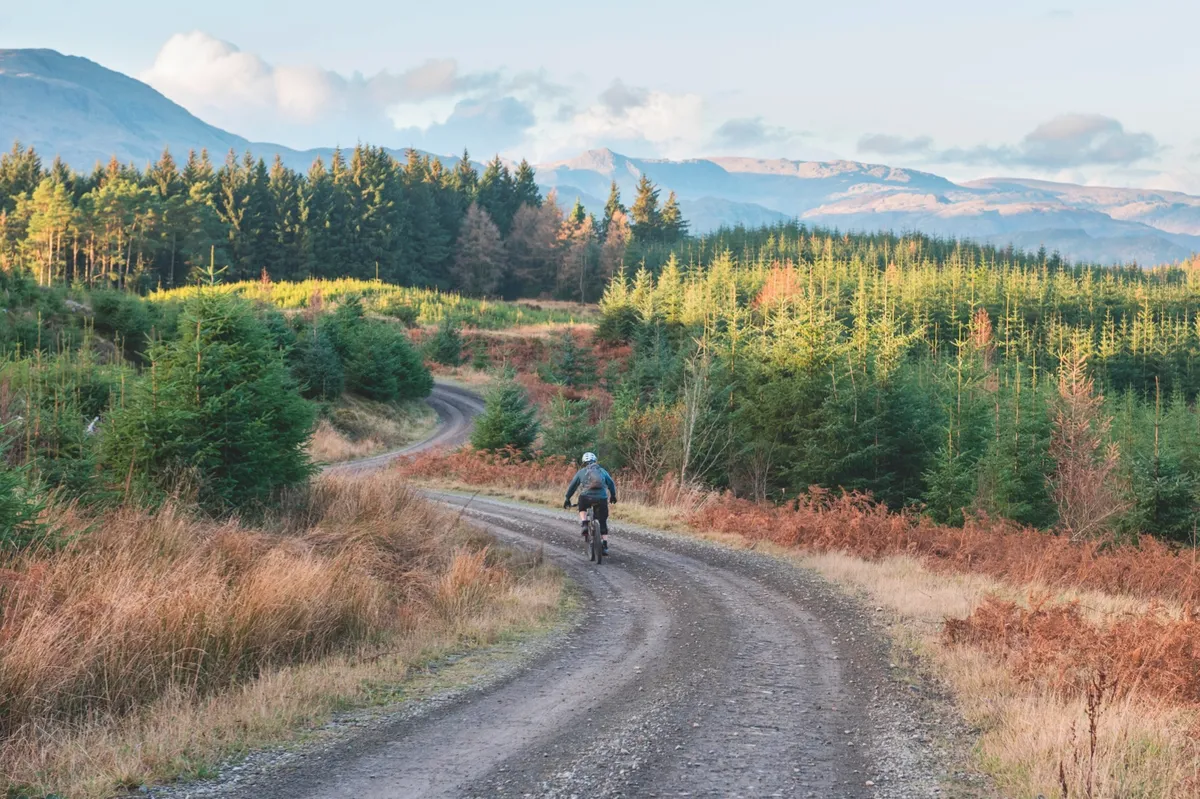
Autumn brings favourite avian species: siskins, lesser-spotted woodpeckers and hawfinches feeding on seeds, shoots and buds. Our largest finch, the hawfinch has a big bill and russet, black and grey colouring. Grizedale is also home to Cumbria’s only population of the acrobatic red kite.
Explore Grizedale on foot with our eight-mile ramble through the trees.
Ospreys over wetlands
An osprey diving from 70 feet in the air towards Bassenthwaite’s shining surface is not a sight that readily fades from the memory. At the last moment, its feet are thrown forwards before – with wings half-folded – it plunges into the water and seizes a fish in its talons. The breathtaking bird then rises from the water again, steadily gaining height, the pale chest the fulcrum of its dark, beating wings. Its talons grasp the fighting fish as it banks away to return to a nest just visible in the heart of a wood.
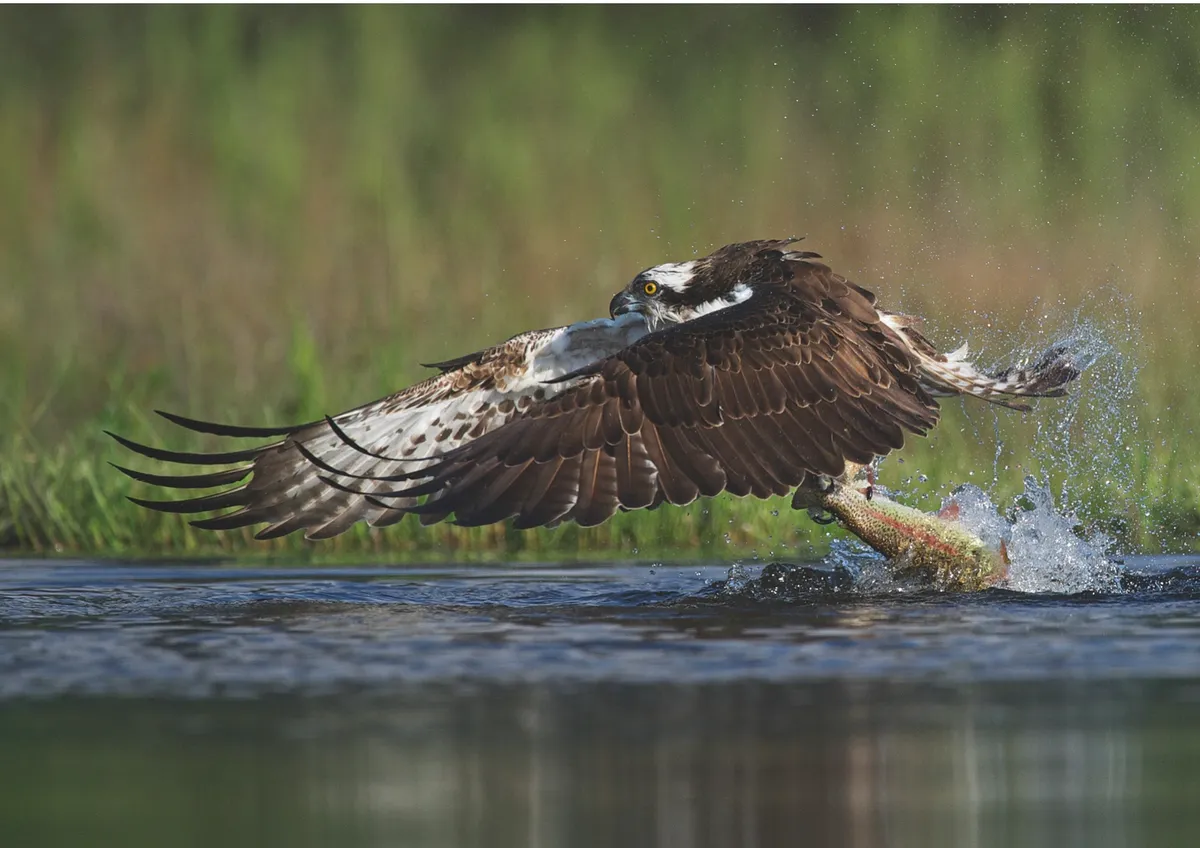
These awe-inspiring raptors returned to breed in the Lake District in 2001 – the first in more than 150 years, and there are now seven pairs. Close to the tidal expanse of Morecambe Bay, Foulshaw Moss Nature Reserve is home to one pair of breeding osprey, and provides a unique opportunity to see them in an unusual landscape.
The lowland raised peatbog at Foulshaw Moss is one of Western Europe’s most threatened habitats. Over thousands of years, sphagnum moss developed into a watery peat dome, which was then drained for centuries to facilitate peat-cutting. Cumbria Wildlife Trust have been restoring the health of the bog by blocking these drains. The boardwalk passes quiet pools of black water, reflecting the pale trunks and rich sienna mix of birch leaves and their pendulous seeds. From viewing platforms with open vistas of heathland framed by distant trees, watch for white-faced darter dragonflies skimming the pools, adders, and myriad swifts, swallows and martins hunting insects in summer.
Discover the coast
For a contrasting landscape, take a coastal stroll on the west coast of Cumbria. Eskmeals Dunes Reserve bisects the rivers Irt and Esk where they merge briefly before pouring out into the Irish Sea. On a clear day, the Isle of Man is visible along the horizon.
On this finger of land, the dunes are home to a profusion of wildflowers in summer – heart’s ease pansy, lady’s bedstraw, plus bee, pyramidal and northern marsh orchids. Autumn highlights here are waders and wildfowl – ringed plovers, oystercatchers, curlews, wigeons and goldeneyes, flocking in to feed on the estuary at low tide. The star species is the natterjack toad, and though it can be harder to find in autumn, studies of the transient tidal pools can yield results.
Our final natural spectacle lies beyond Lakeland, in north and east Cumbria, at Watchtree Nature Reserve near Wigton and Sunbiggin Tarn near Orton. Here, starlings gather in extraordinary numbers to swirl and reel through the evening sky in vast murmurations, commonly from November onwards.
The ephemeral months of autumn provide wildlife spectacles across Cumbria that are worth searching for. Go beyond the usual – you may be surprised by what you find.
Where to eat and stay in the Lake District
The Britannia Inn
This pretty, whitewashed pub in the Langdale valley has a relaxed atmosphere. Local real ales from the Coniston Brewing Company and Eden Brewers; traditional, hearty food.
The Grasmere Hotel
A Victorian country house on the banks of the River Rothay, with gorgeous views. A quick visit to TripAdvisor will show you just what a wow factor it brings out in its guests.
Crow How B and B
Similarly central, there’s a beautiful little B&B called Crow How on the Ambleside to Grasmere road. Dating from 1848, it has two acres of gardens, lovely fell views – and fabulous breakfasts.
The Drunken Duck
The Drunken Duck Inn above Ambleside has its own microbrewery, Barngates. Legend has it that the pub was named when the landlady, finding her ducks lying in the road and dead to the world, started to pluck them; only to realise – when they started squawking – that they’d been drinking from a leaking barrel in the cellar. There are lovely views; the pub is at a crossroads close to Tarn Hows, a famously idyllic little lake.
YHA Black Sail
As remote as it gets – it’s accessible on foot only from Ennerdale or via Black Sail Pass from Wasdale. Breakfast, packed lunches and home-cooked evening meals are available each day.
The Lingholm Estate
Situated in a dramatic location on the western shore of Derwentwater, this is surrounded by incredible views of the Lakeland fells. Beatrix Potter and family holidayed here. A range of self-catering apartments and short breaks are available. From £281 for four nights. 017687 74238
Middlefell Farm
This cosy, traditional stone-built self-catering cottage in the heart of Great Langdale offers stunning views, as well as walks up to Stickle Ghyll and across the valley. The Old Dungeon Ghyll is a short stroll away.
The Newfield Inn
Off the beaten track, the Newfield Inn at Seathwaite in the Duddon Valley has an unusual striped slate-flagged floor, a log burner for chilly days and good food sourced from local suppliers. Its beer garden has bird feeders and views over the fells. Walks from the doorstep include one to Wallabarrow Gorge.
For a list of our favourite holiday homes, take a look at our dedicated article on the best cottages in the Lake District.
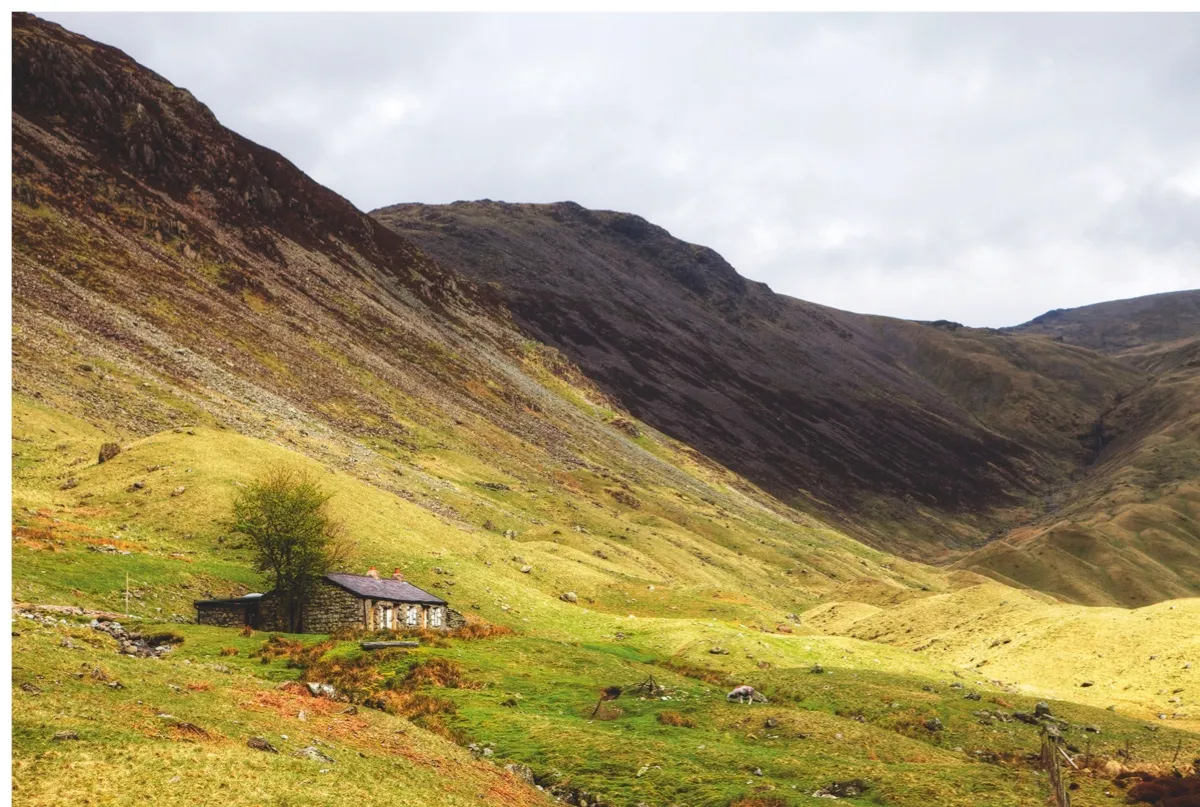
Best walks in the Lake District
Wild Ennerdale
This three- to four-hour walks circles Ennerdale Water, passing internationally important oak woods – and you might see the Galloway cattle that are employed as conservation grazers.
Elterwater
Beginning in Elterwater, then along a section of the Cumbria Way, follow the river as it winds through fields and besides reedbeds. Look out for goldeneye, water rail and woodland birds. Continue to Skelwith Bridge and return on the Cumbria Way, passing Skelwith Force falls then Low Hackett, through Fletchers Wood back to Elterwater.
Whitbarrow Scar
For a spectacular walk in limestone country, head south to Whitbarrow Scar, a key habitat with limestone pavement, heath and woods. Around seven miles with 364m of ascent, the views are stunning. Look over Morecambe Bay to the Irish Sea.
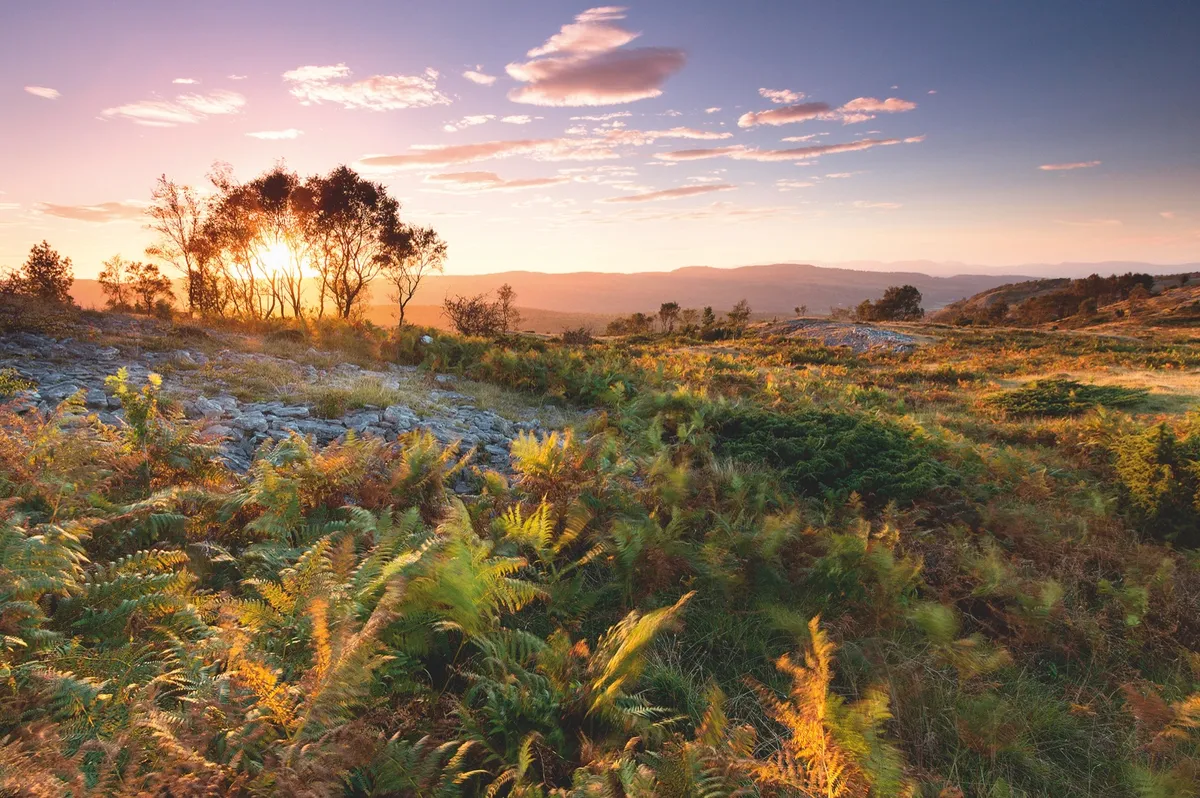
Guided Wildlife Tours
The Lake District has many wildlife walks and activities on offer. Cumbria Wildlife Trust holds some events at its headquarters at Plumgarths, north of Kendal, while others are conducted out and about on its reserves.
For those in search of a seaside wildlife experience, visit the remote Cumbria Wildlife Trust reserve at South Walney, near Barrow in Furness. Grey seals haul ashore to pup in the autumn months, and multitudes of waders come in on a filling tide, creating avian spectacles. 01539 816300
The National Trust offers seasonal walks and activities. 015394 35599,
The Lake District National Park Authority also offer events including walks.
At Esthwaite Water, there are self-drive osprey safaris by electric boat while the ospreys are present.
Find out more about the Lake District National Park
